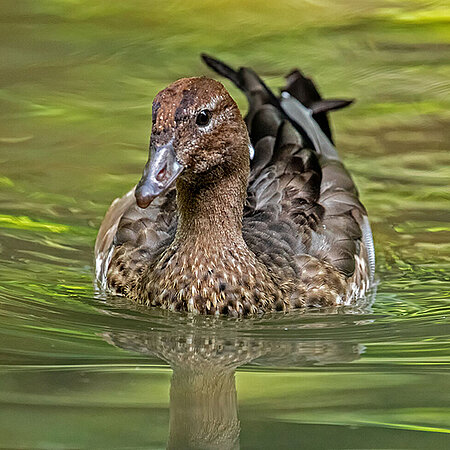Maned Duck
Chenonetta jubata

- FamilyDucks (Anatidae)
- Weightø 800 g
- HabitatMeadows, wetlands and riverside forests
Male mane
The Maned duck is named due to the male’s elongated neck feathers, which can be erected. The male can also be distinguished from the female (same size) by its dark brown head. The bird feeds mainly on grasses, clovers and herbs and spends a lot of time grazing in meadows close to water.
Jumping from high up
Australian wood ducks typically nest in tree cavities. The female lays a clutch of 8-11 eggs, which she incubates on her own. Shortly after hatching, the chicks must jump from the high nest to the ground. After landing safely, the chicks are led to water by their parents. Unlike the adults, the little ones will mainly eat insects for the first few days.
Maned ducks form monogamous breeding pairs that remain together all year round, but often stay with each other for life.